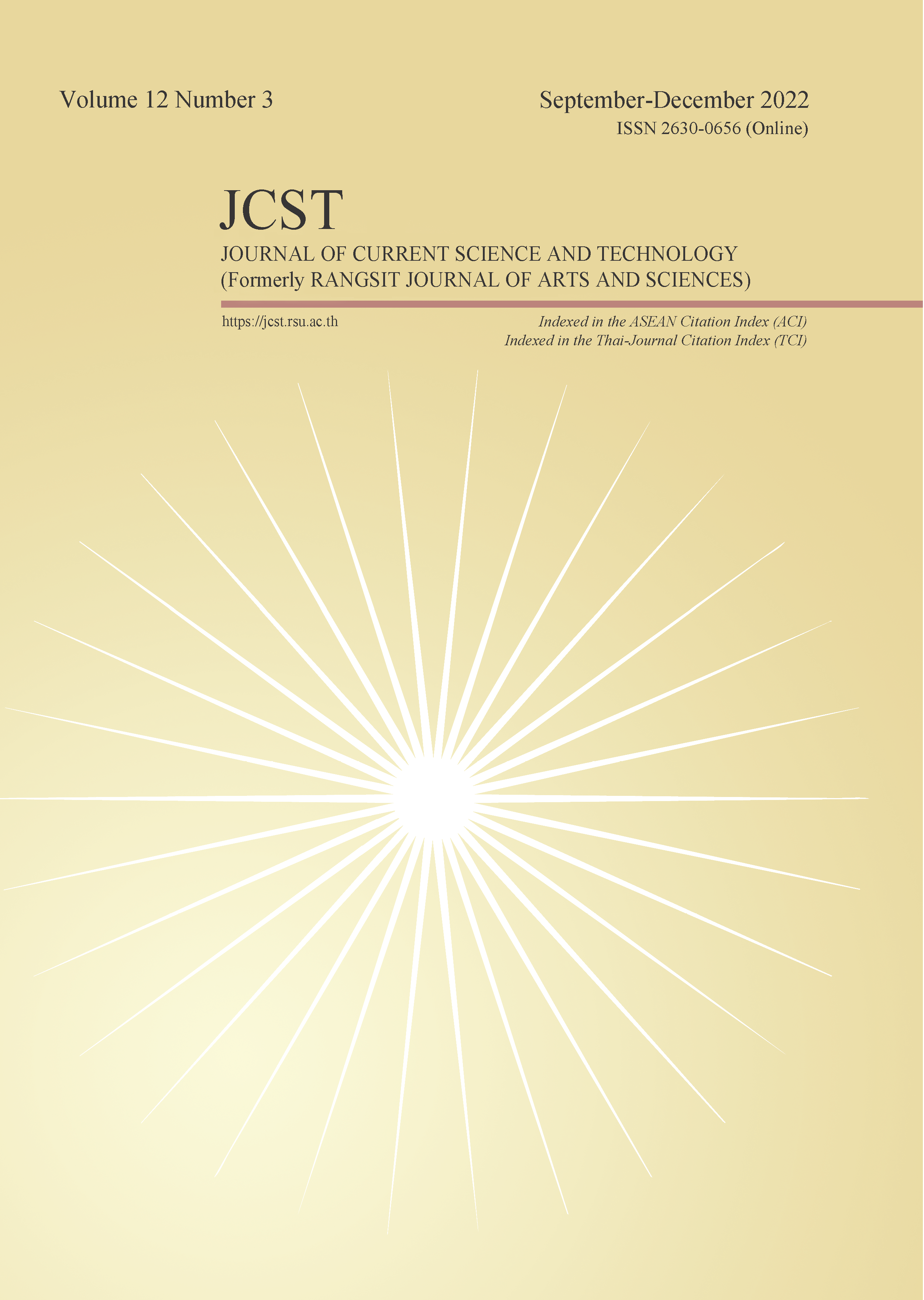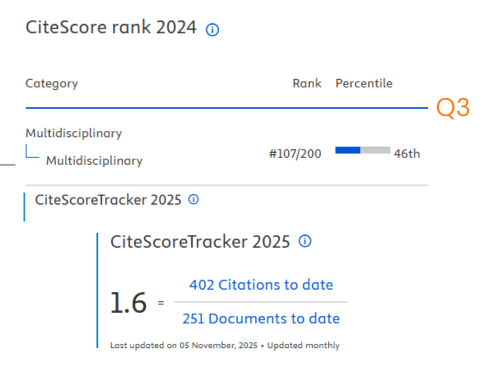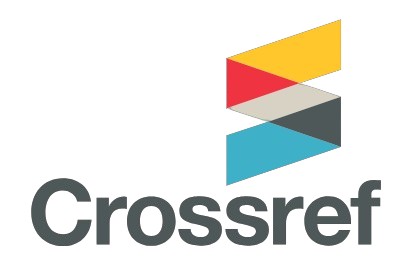HPLC method development and validation for quantitation of CBD and THC in Suk-SaiYas Pills
Keywords:
CBD, HPLC, method validation, pills, Suk-SaiYas recipe, THCAbstract
The Suk-SaiYas recipe is one of the oldest Thai medicinal recipes recorded for insomnia treatment. This recipe comprises 12 herbal medicinal plants, of which cannabis is the major active pharmaceutical ingredient. Recently, traditional medicine has been widely used by many patients. To ensure the therapeutic property of Suk-SaiYas pills, a standard analytical method for measuring the active compound should be identified. This research aims to develop and validate the HPLC method following ICH guidelines to quantify CBD and THC in Suk-SaiYas pills. The chromatographic separation was accomplished using step-gradient elution on the ZORBAX Eclipse Plus C18 (4.6 x 100 mm, 3.5 µm) column at 30oC. Acetonitrile and water were used as mobile phases with a 0.5 ml/min flow rate. CBD and THC exhibited a linear relationship in the concentration range of 0.25 - 10.0 µg/ml with R2 > 0.9998. The repeatability was less than 1%; the intermediate precision did not exceed 2% for both constituents. The average % recovery of two analytes ranged between 92 - 106%. The limit of detection and the limit of quantification was found to be 0.03 and 0.10 µg/ml, respectively. Finally, it may be concluded that the developed HPLC method is precise and accurate for the determination of CBD and THC contents and could be utilized for the quality control of Suk-SaiYas pills
References
AOAC International. (2020). SMPR 2019.003. Retrived form https://www.aoac.org/resources/smpr-2019003/
AOAC Official Methods of Analysis. (2019). Appendix K: Guidelines for dietary supplements and botanicals. (2019). Retrieved August 3, 2022, from http://www.eoma.aoac.org/app_k.pdf
Babson, K. A., Sottile, J., & Morabito, D. (2017). Cannabis, cannabinoids, and sleep: a review of the literature. Current Psychiatry Reports, 19(4), 23. https://doi.org/10.1007/s11920-017-0775-9
Burnier, C., Esseiva, P., & Roussel, C. (2019). Quantification of THC in Cannabis plants by fast-HPLC-DAD: A promising method for routine analyses. Talanta, 192, 135 -141. https://doi.org/10.1016/j.talanta.2018.09.012
Ciolino, L. A., Ranieri, T. L., & Taylor, A. M. (2018a). Commercial cannabis consumer products part 1: GC–MS qualitative analysis of cannabis cannabinoids. Forensic Science International, 289, 429 - 437. https://doi.org/10.1016/j.forsciint.2018.05.032
Ciolino, L. A., Ranieri, T. L., & Taylor, A. M. (2018b). Commercial cannabis consumer products part 2: HPLC-DAD quantitative analysis of cannabis cannabinoids. Forensic Science International, 289, 438 - 447. https://doi.org/10.1016/j.forsciint.2018.05.033
Dong, Y., & Yang, F. M. (2019). Insomnia symptoms predict both future hypertension and depression. Preventive Medicine, 123, 41 - 47. https://doi.org/10.1016/j.ypmed.2019.02.001
Doremus, J. M., Stith, S. S., & Vigil, J. M. (2019). Using recreational cannabis to treat insomnia: evidence from over-the-counter sleep aid sales in Colorado. Complementary Therapies in Medicine, 47, 102207. https://doi.org/10.1016/j.ctim.2019.102207
European Medicines Agency. (1995). ICH Q2 (R1) Validation of analytical procedures: text and methodology. Retrived form https://www.ema.europa.eu/en/ich-q2-r1-validation-analytical-procedures-text-methodology
Fadaki, F., Modaresi, M., & Sajjadian, I. (2017). The effects of ginger extract and diazepam on anxiety reduction in animal model. Indian Journal of Pharmaceutical Education and Research, 51(3s), s159–s162. https://doi.org/10.5530/ijper.51.3s.4
Flemming, T., Muntendam, R., Steup, C., & Kayser, O. (2007). Chemistry and biological activity of tetrahydrocannabinol and its derivatives. Topics in Heterocyclic Chemistry, 1–42. https://doi.org/10.1007/7081_2007_084
Fraguas-Sánchez, A., Fernández-Carballido, A., Martin-Sabroso, C., & Torres-Suárez, A. (2020). Stability characteristics of cannabidiol for the design of pharmacological, biochemical and pharmaceutical studies. Journal of Chromatography B, 1150, 122188. https://doi.org/10.1016/j.jchromb.2020.122188
Ghosh, S., Kumar, A., Sachan, N., & Chandra, P. (2021). Anxiolytic and antidepressant-like effects of essential oil from the fruits of Piper nigrum Linn. (black pepper) in mice: involvement of serotonergic but not GABAergic transmission system. Heliyon, 7(4), e06884. https://doi.org/10.1016/j.heliyon.2021.e06884
Hädener, M., König, S., & Weinmann, W. (2019). Quantitative determination of CBD and THC and their acid precursors in confiscated Cannabis samples by HPLC-DAD. Forensic Science International, 299, 142–150. https://doi.org/10.1016/j.forsciint.2019.03.046
Hertenstein, E., Trinca, E., Wunderlin, M., Schneider, C. L., Züst, M. A., Fehér, K. D., ... & Nissen, C. (2022). Cognitive behavioral therapy for insomnia in patients with mental disorders and comorbid insomnia: a systematic review and meta-analysis. Sleep Medicine Reviews, 101597. https://doi.org/10.1016/j.smrv.2022.101597
Hritcu, L., Noumedem, J. A., Cioanca, O., Hancianu, M., Postu, P., & Mihasan, M. (2015). Anxiolytic and antidepressant profile of the methanolic extract of Piper nigrum fruits in beta-amyloid (1–42) rat model of Alzheimer’s disease. Behavioral and Brain Functions, 11(1). https://doi.org/10.1186/s12993-015-0059-7
Jin, D., Zhang, J., Zhang, Y., An, X., Zhao, S., Duan, L., ... & Tong, X. (2021). Network pharmacology-based and molecular docking prediction of the active ingredients and mechanism of ZaoRenDiHuang capsules for application in insomnia treatment. Computers in Biology and Medicine, 135, 104562. https://doi.org/10.1016/j.compbiomed.2021.104562
Kartal, D., Arjmand, H. A., Varker, T., Cowlishaw, S., O'Donnell, M., Phelps, A., ... & Hinton, M. (2021). Cross-lagged relationships between insomnia and posttraumatic stress disorder in treatment-receiving veterans. Behavior Therapy, 52(4), 982–994. https://doi.org/10.1016/j.beth.2020.12.006
McRae, G., & Melanson, J. E. (2020). Quantitative determination and validation of 17 cannabinoids in Cannabis and hemp using liquid chromatography-tandem mass spectrometry. Analytical and Bioanalytical Chemistry, 412(27), 7381–7393. https://doi.org/10.1007/s00216-020-02862-8
Mondino, A., Cavelli, M., González, J., Santana, N., Castro-Zaballa, S., Mechoso, B., ... & Falconi, A. (2019). Acute effect of vaporized Cannabis on sleep and electrocortical activity. Pharmacology Biochemistry and Behavior, 179, 113–123. https://doi.org/10.1016/j.pbb.2019.02.012
Mooney, L. J., Zhu, Y., Yoo, C., Valdez, J., Moino, K., Liao, J. Y., & Hser, Y. I. (2018). Reduction in cannabis use and functional status in physical health, mental health, and cognition. Journal of Neuroimmune Pharmacology, 13(4), 479–487. https://doi.org/10.1007/s11481-018-9813-6
Morin, C. M., Drake, C. L., Harvey, A. G., Krystal, A. D., Manber, R., Riemann, D., & Spiegelhalder, K. (2015). Insomnia disorder. Nature Reviews Disease Primers, 1(1). https://doi.org/10.1038/nrdp.2015.26
Patel, B., Wene, D., & Fan, Z. T. (2017). Qualitative and quantitative measurement of cannabinoids in Cannabis using modified HPLC/DAD method. Journal of Pharmaceutical and Biomedical Analysis, 146, 15–23. https://doi.org/10.1016/j.jpba.2017.07.021
Saingam, W., & Sakunpak, A. (2018). Development and validation of reverse phase high performance liquid chromatography method for the determination of delta-9-tetrahydrocannabinol and cannabidiol in oromucosal spray from cannabis extract. Revista Brasileira de Farmacognosia, 28(6), 669–672. https://doi.org/10.1016/j.bjp.2018.08.001
Short, N. A., Zvolensky, M. J., & Schmidt, N. B. (2021). A pilot randomized clinical trial of brief behavioral treatment for insomnia to reduce problematic cannabis use among trauma-exposed young adults. Journal of Substance Abuse Treatment, 131, 108537. https://doi.org/10.1016/j.jsat.2021.108537
Subarnas, A., Apriyantono, A., & Mustarichie, R. (2010). Identification of compounds in the essential oil of nutmeg seeds (Myristica fragrans Houtt.) that inhibit locomotor activity in mice. International journal of molecular sciences, 11(11), 4771-4781. https://doi.org/10.3390/ijms11114771
Tan, K. R., Rudolph, U., & Lüscher, C. (2011). Hooked on benzodiazepines: GABAA receptor subtypes and addiction. Trends in Neurosciences, 34(4), 188–197. https://doi.org/10.1016/j.tins.2011.01.004
Vaclavik, L., Benes, F., Fenclova, M., Hricko, J., Krmela, A., Svobodova, V., ... & Mastovska, K. (2019). Quantitation of cannabinoids in Cannabis dried plant materials, concentrates, and oils using liquid chromatography–diode array detection technique with optional mass spectrometric detection: single-laboratory validation study, first action 2018.11. Journal of AOAC International, 102(6), 1822–1833. https://doi.org/10.1093/jaoac/102.6.1822
Wichniak, A., Wierzbicka, A., Walęcka, M., & Jernajczyk, W. (2017). Effects of antidepressants on sleep. Current Psychiatry Reports, 19(9). https://doi.org/10.1007/s11920-017-0816-4
Yangsud, J., Ahkkarachinoreh, P., Santasanasuwan, S., Suksaeree, J., Songsak, T., Maha, A., ... & Monton, C. (2021). Effect of vegetable oil types on the stability of cannabinoids in cannabis sublingual drops. J. Curr. Sci. Technol., 11(1), 15-23. DOI: 10.14456/jcst.2021.4
Yangsud, J., Santasanasuwan, S., Ahkkarachinoreh, P., Maha, A., Madaka, F., Suksaeree, J., ... & Monton, C. (2021a). Stability of cannabidiol,∆ 9-tetrahydrocannabinol, and cannabinol under stress conditions. Advances in Traditional Medicine, 21(3), 475-484. https://doi.org/10.1007/s13596-021-00590-7
Downloads
Published
How to Cite
Issue
Section
License

This work is licensed under a Creative Commons Attribution-NonCommercial-NoDerivatives 4.0 International License.






